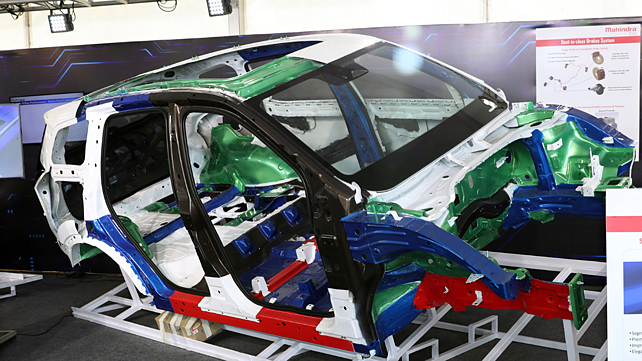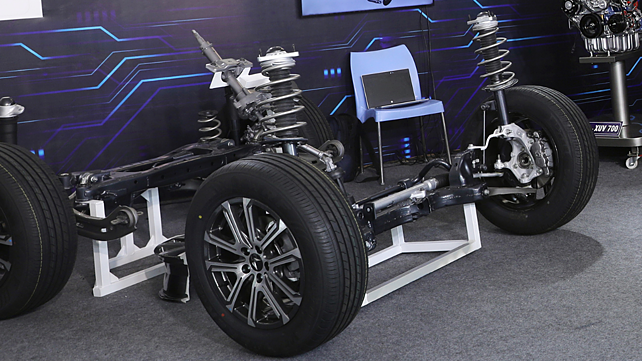
On India’s 75th Independence Day, utility vehicle major Mahindra and Mahindra unveiled what it calls its most ambitious product till date – the XUV700. Built on an entirely new platform, there is a lot riding on this SUV for the company. It is the core on which M&M is looking to build and get back its Numero Uno position in the UV segment in the country.
The new platform aside, the XUV700 gets massive leg-up on its connected technology portfolio, highlighted by the AdrenoX system – a result of intense collaboration between Visteon and Mahindra design and technical teams.
Overall, from a technology and innovation standpoint, the XUV700 outdoes almost everything that the company had done till date on any of its products.
In this feature, we take a deeper look at the XUV700 platform.
What’s new?
Almost everything. For this brand new platform, Mahindra brought in the lightweight index concept – a concept first introduced by BMW. In this concept, the BIW (body in white) weight is divided by the torsional stiffness of the body. The rear end of the vehicle is fixed, and in the front suspension towers, vertical load is applied upwards on the right side, and downwards on the left side.

To achieve the targeted longitudinal acceleration and stiffness of the vehicle, Mahindra engineers identified 238 joint areas that needed very critical attention to define different grades of stiffnesses. Moreover, the BIW is made using four different materials – standard steel, high strength steel (HSS), advanced high strength steel (AHSS) and boron steel. In all, 21% of the XUV700 BIW is made of boron steel, and approximately 20% is AHSS. The remaining 59-60% comprises of HSS and standard steel.
There are over 6,300 weld points in the XUV700, which is far above what existed in the earlier Mahindra products. The location and density of the weld points were derived directly from the CAE, explained R Velusamy, Global Chief of Product Development, Automotive Sector, M&M. Further, the XUV700 has got over 155 metre of structural sealants.
From a geometric standpoint, the platform gets a ring structure for the A, B and C pillars that is joined by a trident structure – this essentially is the front long member that splits into three parts. The first part gets into the A pillar, while the second goes into the sill and middle part goes into the door reinforcements.
The floor gets a ‘hutch in, hutch out’ structure. Hutch with the ladder is typically a very strong structure for bending. This essentially gives the least weight but the best stiffness, said Velusamy.
Overall, there are three structural geometric innovations introduced on the XUV700 platform – the hutch in, hutch out structure, the ring structure and the trident structure. The combination of number of welds, structural sealants, geometry of the structure and materials gave the XUV700 platform the lowest weight possible to get the best stiffness, both locally and globally.
For more details on the development of the XUV700, watch our interaction with R Velusamy here: